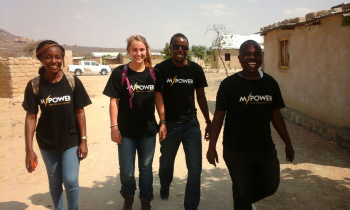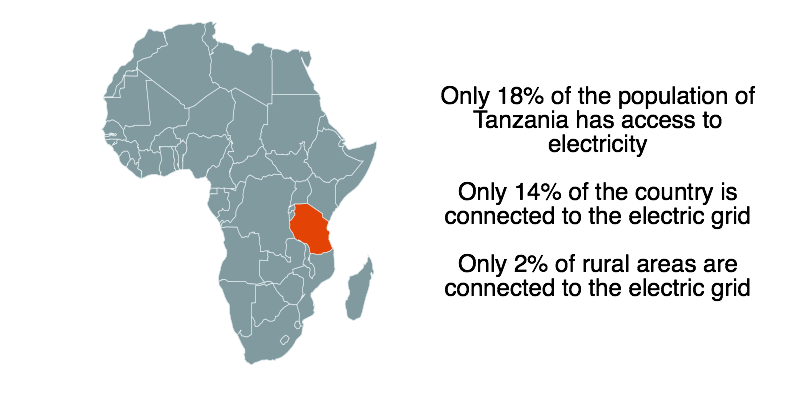Alumna helps bring electricity to remote regions of Africa
Barely a month after her graduation from Harvard, Bethany Kanten, S.B. ’15, was sitting on an airplane bound for East Africa. But Kanten, an electrical engineering concentrator, wasn’t headed to a summer internship or a post-graduation vacation; the Utah native was flying to her new home in Tanzania.
In July, she started working for Off-Grid Electric, a startup that leases solar panels to families living in some of the most remote regions of Tanzania, a nation of 50 million that is struggling to establish a reliable power grid.
“Looking back, I probably should have been a little more apprehensive than I was,” Kanten said. “This is definitely a different path than what I was expecting when I entered college.”
 The seeds for her journey to Tanzania were planted while she was a student at the John A. Paulson School of Engineering and Applied Sciences. Kanten became engrossed in the energy challenges faced by developing countries, and how renewable energy could help create sustainable economic progress.
The seeds for her journey to Tanzania were planted while she was a student at the John A. Paulson School of Engineering and Applied Sciences. Kanten became engrossed in the energy challenges faced by developing countries, and how renewable energy could help create sustainable economic progress.
During two internships at solar power companies, Kanten saw the difficulties involved in maintaining reliable solar systems in developing nations. So for her senior project in the capstone course Engineering Sciences 100, Kanten developed a system that remotely monitors the energy generated by solar panels and transmits critical data via text message.
“Right now, companies have no way to tell if their solar system is broken, or if the batteries need to be replaced soon, or if part of the system has been stolen,” she said. “By monitoring what is happening with their solar systems, companies could perform maintenance faster and more efficiently so the solar panels have a greater impact on the people who rely on this electricity.”
Her internships also convinced Kanten that, to tackle renewable energy problems in developing countries, she would need to be “boots on the ground.”
She shunned job boards like Monster and Indeed and focused her employment search through the United Nations database of companies that operate in the developing world. While she scanned positions all over the map, Kanten felt drawn to Off-Grid Electric and Tanzania because of the opportunity to help improve the lives of others.
In July, she began working as an operations engineer, focused on educating the company’s clients to effectively operate and maintain their solar power systems. Educating engineers is a critical piece too, she said, since the systems generate the maximum amount of clean energy only if they are installed correctly.

Clean energy can make a world of difference for villagers who live miles away from major urban centers. The U.N. reports that 50 percent of the Tanzanian population will never be connected to the country’s electric grid because they live in such remote areas.
“It has been really transformative to see how people are living in some of these rural locations,” she said. “Our company’s most basic system provides enough power for lights and a phone charger, but that can completely change everything for some of these families.”
Inexpensive solar systems can help improve education by enabling children to study after the sun goes down. Renewable energy also has health benefits, since many poor Tanzanian families light their homes with kerosene and often become sick from the smoke.
Bringing electricity to isolated villages across Tanzania has been rewarding and eye opening for Kanten. Seeing entire families living in one-room mud huts with only a few possessions really puts everything into perspective, she said.
Kanten hopes to continue to help those families through Off-Grid Electric. The startup currently serves about 75,000 customers in Tanzania and neighboring Rwanda, but the firm’s founders plan to reach one million homes by the end of 2017.
“I am really excited to continue to grow this company and continue to make an impact through what we are doing,” she said. “Living and working in Tanzania has definitely not been easy, but it has turned out to be exactly what I wanted.”
Infographic data courtesy of a U.S. Energy Association report.